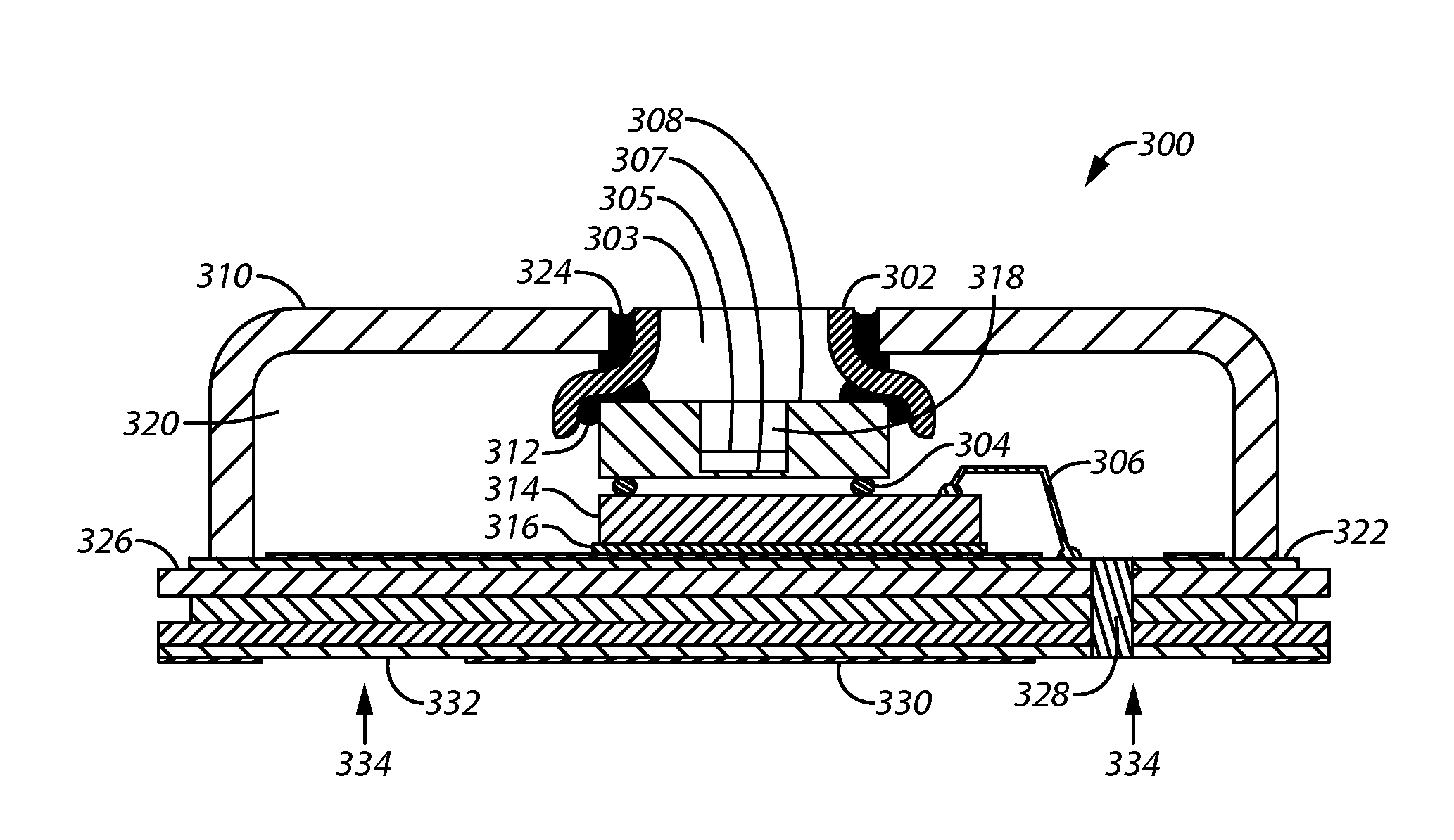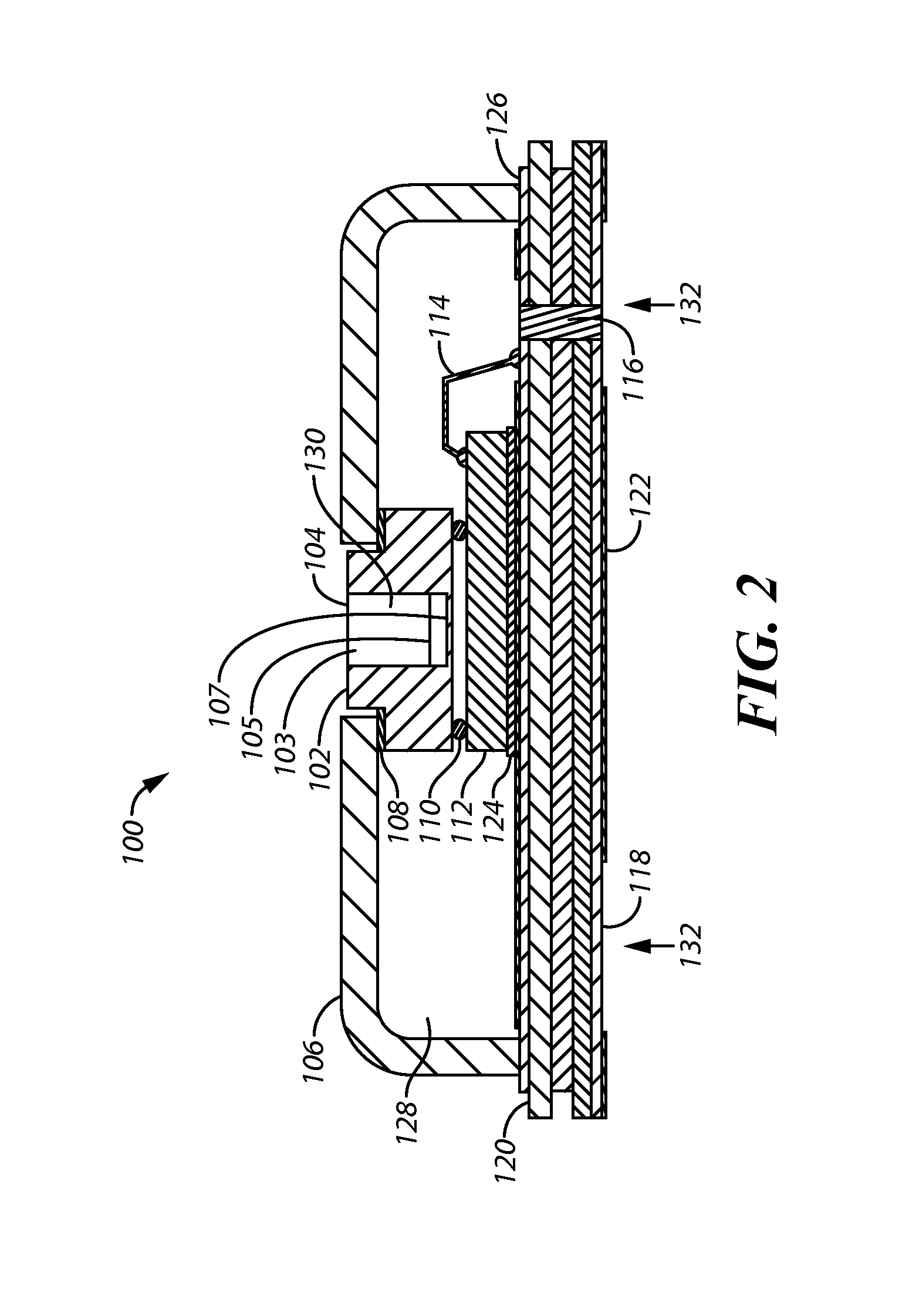Microphone assembly
a technology of microphone assembly and microphone, applied in the direction of microphone structural association, loudspeaker, semiconductor electrostatic transducer, etc., can solve the problems of less than ideal for top port microphones, large footprint of circuit to the base, and reduced front and back volum
- Summary
- Abstract
- Description
- Claims
- Application Information
AI Technical Summary
Benefits of technology
Problems solved by technology
Method used
Image
Examples
Embodiment Construction
[0035]In the approaches described herein, microphones (e.g., wideband microphones having a “flat” response characteristics out to approximately 20 kHz, meaning less than approximately + / −5 dB variation out to approximately 20 kHz) in a top port configuration are provided with these microphones having desirable sensitivity characteristics. For example, the approaches described herein provide microphones having a resonance peak equal to or exceeding that of previous bottom port microphones. Moreover, the sensitivity responses for the top port microphones provided herein are similar to the desirable sensitivity characteristics provided by bottom port microphones. The approaches described herein also provide for small assemblies (e.g., with assembly dimensions of approximately 3.76×2.95×1.13 mm or less to take one specific example).
[0036]In some aspects, approaches are provided that utilize multiple and different chip attachment techniques (e.g., wire bonding, surface mounting, embeddin...
PUM
 Login to View More
Login to View More Abstract
Description
Claims
Application Information
 Login to View More
Login to View More - R&D
- Intellectual Property
- Life Sciences
- Materials
- Tech Scout
- Unparalleled Data Quality
- Higher Quality Content
- 60% Fewer Hallucinations
Browse by: Latest US Patents, China's latest patents, Technical Efficacy Thesaurus, Application Domain, Technology Topic, Popular Technical Reports.
© 2025 PatSnap. All rights reserved.Legal|Privacy policy|Modern Slavery Act Transparency Statement|Sitemap|About US| Contact US: help@patsnap.com



